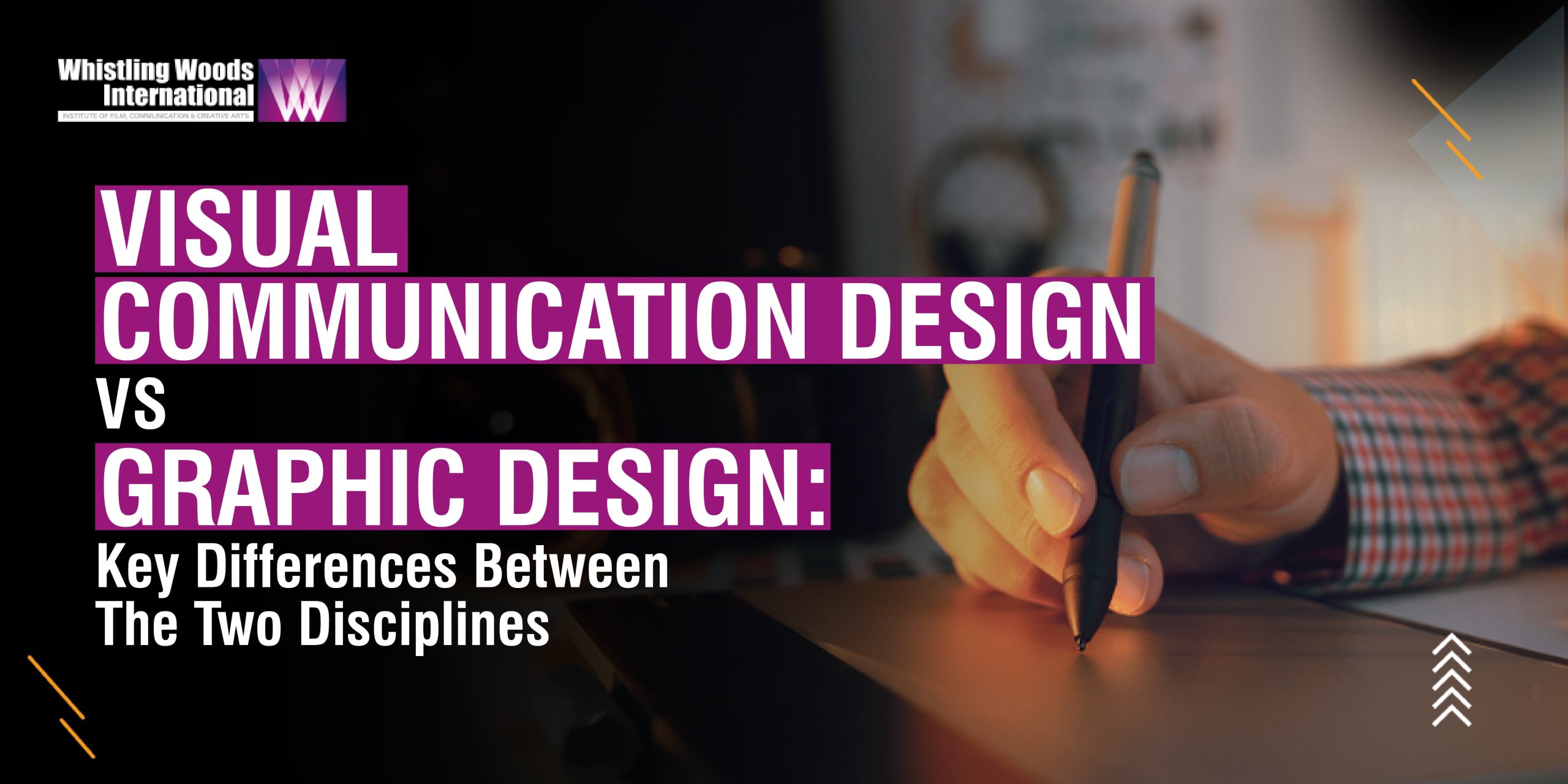Are you passionate about creating visual content and considering turning that passion into a career? The world of design offers many opportunities for creative individuals, but with many different fields, it can take time to figure out where to start.
Two standard options are visual communication design and graphic design, but what are the key differences between the two?
Understanding these differences can help you choose the right course for you and set you on the path toward a fulfilling and successful career in the design industry.
In this blog, we’ll explore the differences between visual communication design and graphic design and help you decide which path to pursue.
Key Differences Between Visual Communication Design & Graphic Design
1. Goals and Applications
Visual communication design aims to communicate information or messages in a way that is visually engaging, informative, and accessible to a specific audience. It can include various mediums, such as print, digital, and multimedia. In addition, visual communication designers often work in fields such as UI/UX design, wayfinding, and information design.
UI/UX design focuses on creating intuitive, user-friendly interfaces for digital products, such as websites and mobile apps. Wayfinding design involves creating visual cues that help people navigate physical spaces, such as airports and hospitals. Finally, information design presents complex information clearly and understandably through data visualisations and infographics.
Graphic design, on the other hand, is primarily focused on creating visual content that serves a commercial or promotional purpose. It can include creating visual identities for businesses, designing marketing materials, and developing advertising campaigns. Graphic designers often work in fields such as branding, advertising, and marketing.
Also Check: 5 Reasons to Pursue a Career in Visual Communication Design
2. Techniques
Visual communication designers use multifarious techniques to create compelling visual messages. They often start by researching and understanding their target audience and the context in which the visual message will be received. They then use typography, colour, layout, and other design elements to create visual hierarchies that guide the viewer’s eye and convey the intended message.
For example, a visual communication designer might create a series of infographics for a nonprofit organisation that aims to raise awareness about climate change. The designer might use a colour scheme that evokes natural elements, such as blues and greens, and choose typography that is easy to read and emphasises key points. They also use illustrations and icons to simplify complex information and make it more engaging for the viewer.
Graphic designers, on the other hand, use similar design elements and techniques but with a different goal in mind. They often focus on creating a strong visual identity for a business or product, which involves developing a distinctive logo, colour scheme, and typography that can be used consistently across various mediums.
For example, a graphic designer might work with a startup company to develop a visual identity that reflects the company’s values and personality. The designer might create a logo that is bold and eye-catching, use a colour scheme that is distinctive and memorable, and choose typography that is modern and clean. They might also develop marketing materials, such as brochures and business cards, that use the same visual elements to reinforce the brand identity.
3. Application and Mediums
Visual communication designers work across different mediums and platforms, including print media, digital media, websites, mobile applications, environmental graphics, interactive displays, and more. They consider specific requirements and constraints of each medium and adapt their designs accordingly.
Whereas graphic designers primarily focus on creating visual designs for specific mediums, such as print media (brochures, posters, packaging) or digital media (websites, social media graphics). They work with specific dimensions, resolutions, and file formats appropriate for the intended medium.
Wrapping Up
Visual communication and graphic design are two closely related disciplines involving visual elements to convey messages. While they share some similarities, their goals, applications, and techniques differ. Visual communication design aims to communicate information in a way that is engaging, informative, and accessible, while graphic design focuses on creating visual content for commercial or promotional purposes.
Understanding the differences between these two disciplines can help you determine which one is best suited for you to pursue. For example, a graphic design career may be the better choice if you want to create visual content for commercial or promotional purposes, such as branding or advertising. However, if you need to convey complex information or messages in a clear and accessible way, a visual communication design career may be the way to go.
Whistling Woods International (WWI) offers a variety of programmes in areas such as animation, media and communication, and visual communication design. Our course stands out as a comprehensive programme that focuses on the art of visual storytelling. The programme is designed to help students develop their creativity, visual literacy, and design skills through a combination of theoretical and practical learning.
This programme covers topics such as typography, branding, illustration, packaging design, and user experience design. The programme is delivered by experienced faculty members who are experts in their respective fields and are committed to providing a challenging and stimulating learning environment.
Our visual Communication Design course is an excellent option for students who are passionate about visual storytelling and want to pursue a career in graphic design, branding, advertising, or other related fields.

